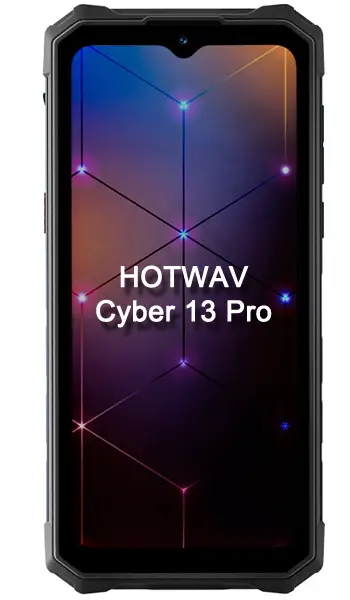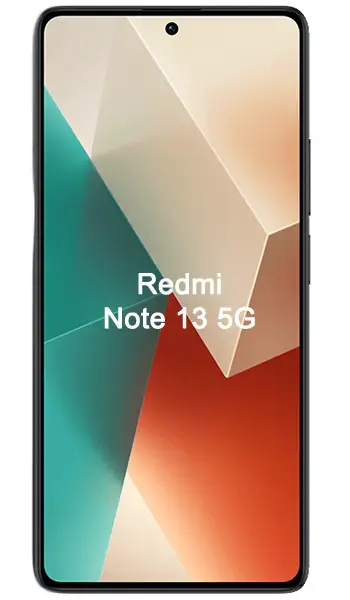Hotwav Cyber 13 Pro vs Xiaomi Redmi Note 13 (China) Comparison and Differences
Smartphone 1

Hotwav Cyber 13 Pro
Smartphone 2

Xiaomi Redmi Note 13 (China)
Smartphone 3
Differences between Hotwav Cyber 13 Pro and Xiaomi Redmi Note 13 (China) - Which to Choose?
Reasons to consider the Hotwav Cyber 13 Pro:
- Larger battery capacity of 10800 mAh for extended use.
- Rugged design with IP68, MIL-STD-810G, and IP69K resistance certifications.
- Higher RAM and internal storage option available (12GB 256GB Pro).
- Dedicated microSDXC card slot for expandable storage.
- Higher refresh rate display at 90 Hz for smoother visuals.
- Triple camera setup on the back with a 64 MP main sensor.
- NFC support for contactless payments and connectivity.
- Higher Antutu 9 score of 285004 indicating potentially better performance.
Reasons to consider the Xiaomi Redmi Note 13 (China):
- Supports 5G connectivity for faster data speeds.
- AMOLED display which generally offers better contrast and color than LCD IPS.
- Higher screen resolution and pixel density (395 ppi).
- More compact and lighter body design, weighing at 173.5g.
- Higher-resolution main camera with 108 MP sensor.
- IP54 dust and splash resistance certification.
- Fast charging support with 33W capacity.
- Lower starting price at 140 EUR, offering value for money.
Both phones offer unique features that cater to different needs and preferences. The Hotwav Cyber 13 Pro is focused on ruggedness and battery life, making it suitable for fieldwork and extreme conditions. On the other hand, the Xiaomi Redmi Note 13 provides 5G support and a superior display technology, ideal for media consumption and everyday use where speed and visual quality are important.
Hotwav Cyber 13 Pro or Xiaomi Redmi Note 13 (China) Specs Comparison
or
 Common specs
Common specs
| Brand and model | Hotwav Cyber 13 Pro | Xiaomi Redmi Note 13 (China) | |
| Rating | (+0) | (+0) | |
| Release date | October, 2023 | 2023, September 21 | |
| Dimensions (HxWxD) | 176.8 x 84.2 x 16.8 mm | 6.96 x 6.96 x 3.31 in | 161.1 x 75 x 7.6 mm | 6.34 x 6.34 x 2.95 in | |
| Weight | 380 g | 13.4 oz | 173.5 g | 6.12 oz | |
| Body Build | TPU , Rugged Smartphone | ||
| Case | buy from Amazon | buy from Amazon | |
| Colors | Black | Black, White, Blue | |
| Battery | 10800 mAh, Li-Polymer, non-removable | 5000 mAh, Li-Po, non-removable | |
| Approximate price | 140 EUR | ||
| Check price | from Amazon | from Amazon |
 Screen
Screen
| Technology | LCD IPS | AMOLED | |
| Touchscreen | capacitive touchscreen | capacitive touchscreen | |
| Display colors | 16M | 1B | |
| Screen size | 6.6" in | 6.67" in | |
| Screen area | 107.4 cm2 | ||
| Screen format | 21:9 (height:width) | 20:9 (height:width) | |
| Screen to body ratio | 70% | 88.9% | |
| Screen resolution | 1080 x 2408 px | 1080 x 2400 px | |
| Screen PPI /points per inch/ | 396 PPI | 395 PPI | |
| Screen protection | Corning Gorilla Glass 5 | ||
| Other specs | - -90 Hz |
- 120Hz, 1000 nits (peak) - |
|
| Screen protector | buy from Amazon | buy from Amazon |
 Camera and Video
Camera and Video
| Rear camera, main | 64 MP, Triple | 108 MP, Dual | |
| Camera specs | -64 MP, Unknow, (wide), -8 MP, ƒ/ 2.2, (ultrawide), 1.12 µm -0.3 MP, (wide) |
-108 MP, f/1.7, (wide), 0.64µm, PDAF -2 MP, f/2.4, (depth) |
|
| Functions | Dual LED flash | LED flash, HDR, panorama | |
| Video | 1080p video | 1080p@30fps | |
| Front camera, selfie | 16 MP, Single | 16 MP, Single | |
| Specifications | 16 MP, ƒ/ 2.0, 1.00 µm | 16 MP, (wide) | |
| Functions | HDR | ||
| Video | 1080p@30fps |
 Performance
Performance
| Operating system - OS | Android 13 Tiramisu | Android 13, MIUI 14 | |
| Chipset | - Unisoc Tiger T619 (12 nm) | - Mediatek MT6833P Dimensity 6080 (6 nm) | |
| CPU | - Octa-Core (2 x ARM Cortex A75 2.2Ghz + 6 x ARM Cortex A55 1.8Ghz) | - Octa-core (2x2.4 GHz Cortex-A76 & 6x2.0 GHz Cortex-A55) | |
| GPU | GPU ARM Mali-G57 | Mali-G57 MC2 | |
| External memory | microSDXC (uses shared SIM slot) | No | |
| Internal memory | 12GB 256GB Pro | 128GB 6GB RAM, 128GB 8GB RAM, 256GB 8GB RAM, 256GB 12GB RAM |
 Benchmark
Benchmark
| Antutu 9 Total | 285004 | ||
| GeekBench 6 Single Core | 769 | ||
| GeekBench 6 Multi Core | 2087 | ||
| GeekBench 5 Single Core | 597 | ||
| GeekBench 5 Multi-Core | 1821 |
 Communication and Connectivity
Communication and Connectivity
| SIM card | Dual SIM, dual stand-by (Nano SIM + Nano SIM) | Dual SIM (Nano-SIM, dual stand-by) | |
| Network | 2G / 3G / 4G / | GSM / CDMA / HSPA / CDMA2000 / LTE / 5G | |
| Bands | -2G - B2 (1900), B3 (1800), B5 (850), B8 (900) -3G - B1 (2100), B2 (1900), B4 (1700/2100 AWS A-F), B5 (850), B8 (900) -4G - B1 (2100), B2 (1900), B3 (1800), B4 (1700/2100 AWS 1), B5 (850), B7 (2600), B8 (900), B12 (700), B13 (700), B17 (700), B18 (800), B19 (800), B20 (800), B25 (1900+), B26 (850), B28b (700), B28a (700), B38 (TDD 2600), B39 (TDD 1900), B40 (TDD 2300), B41 (TDD 2500), B66 (1700/2100) |
-2G - GSM 850 / 900 / 1800 / 1900 - SIM 1 & SIM 2 CDMA 800 -3G - HSDPA 850 / 900 / 2100 CDMA2000 1x -4G - 1, 3, 5, 8, 34, 38, 39, 40, 41 -5G - 1, 5, 8, 28, 41, 78 SA/NSA |
|
| Speed | HSPA, LTE-A, 5G | ||
| GPRS | Yes | Yes | |
| Edge | Yes | Yes | |
| Wi-Fi | 802.11a, 802.11b, 802.11g, 802.11n, 802.11n 5GHz, 802.11ac,Dual band ,Wi-Fi Hotspot ,Wi-Fi Direct ,Wi-Fi Display | Wi-Fi 802.11 a/b/g/n/ac, dual-band | |
| GPS | GPS, A-GPS, GLONASS, Beidou | GPS, GLONASS, GALILEO, BDS | |
| NFC | Yes | No | |
| USB | Yes, USB Type C, USB On-The-Go (OTG) | USB Type-C 2.0 | |
| Bluetooth | Bluetooth 5.3, A2DP | 5.3, A2DP, LE |
 Music and Audio
Music and Audio
| Radio | Yes | No | |
| Headphone jack | Yes | Yes | |
| Others | - 24-bit/192kHz audio |
 Other features
Other features
| Sensors | - Fingerprint (side-mounted), Proximity, Accelerometer, compass, gyro , Infrared port | - Fingerprint (side-mounted), accelerometer, gyro, proximity, compass , Infrared port | |
| Other extras |
- -Fast charging 20.0W - Resistance certificates (dust, water) -IP68, MIL-STD-810G -IP69K |
- 33W Fast charging - IP54, dust and splash resistant |
Reviews and Opinions on Hotwav Cyber 13 Pro and Xiaomi Redmi Note 13 (China)
If you had to recommend one of these phones to a friend, which one would it be and why? Share your arguments using the Add Opinion button!
